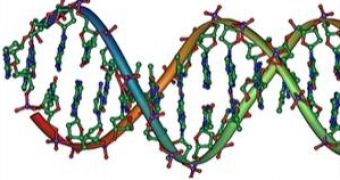A new technology permits scientists to build minuscule light-conducting fiber optic cables out of DNA strands. This novel technique may soon open the doors for a technological revolution in the optical computer world (computers that run on light instead of electricity), or in artificial photosynthesis systems which will soon be used for solar light capture and conversion into electric energy, replacing modern solar cells entirely.
The “veins” that carry the fuel for these technologies (light) need to be extremely small, for ergonomic reasons. A team from Chalmers University of Technology in Gothenburg, Sweden, led by Bo Albinsson, has developed tiny wires made of a combination of DNA strands and chromophores that are just right for the task of carrying along photons. Their natural counterpart is found in algae-like organisms, where photonic wires carry photons to the storage part of the plant's cells.
The chromophores are the molecular parts responsible for plants' colors, which absorb incoming light by exciting an electron from a ground state into an excited state. The scientists used YO-type chromophores as energy mediators in order to conceive 20-nanometer long wires which are only several nanometers in diameter, perfect for microchips. The chromophores show a particular affinity for DNA strands and willingly fill the gaps between their basic “bars”, leading to the formation of a strand filled with chromophores. This allows for a quick replacement of any potential “damaged” chromophore, offering the “cables” a longer lifespan and increased reliability.
The main drawback of the technique is that the chromophores' placement is random and cannot be controlled in any way so far, which leads to a variation in spreading homogeneity, so the difference between strands could be really big. Currently, Niek van Hulst from the Spanish Institute of Photonic Sciences in Barcelona is focused on finding whether the synthetic molecules made from zero can prove more effective than the modified DNA strands.

 14 DAY TRIAL //
14 DAY TRIAL //